Posts Tagged ‘lawyer’
Study: Insurance Industry Pushes for ‘Hard Market,’ Rate Increases
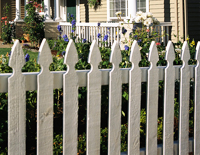 A new study shows the property/casualty insurance industry creates periodic crises in which insurance becomes unaffordable or unavailable. It alleges the industry is currently trying to create such a crisis now to drive up profits.
A new study shows the property/casualty insurance industry creates periodic crises in which insurance becomes unaffordable or unavailable. It alleges the industry is currently trying to create such a crisis now to drive up profits.
The study was undertaken by the Americans for Insurance Reform (AIR), a coalition of nearly 100 consumer and public interest groups which represent more than 50 million people. Casualty and property insurance is important because it provides coverage for accidents for individuals, businesses and governments. Rate hikes could stifle their ability to operate and prevent accident victims from obtaining fair compensation.
The Study
The study is called “Repeat Offenders: How the Insurance Industry Manufactures Crises and Harms Americans.” It presents data showing the typical insurance rate cycle for and the dramatic rise in insurers’ current surplus – the amount insurers set aside to pay estimated future claims. In 2010, the insurers had an all-time high $580 billion surplus on hand, more than double the amount in 1996.
The United States has been in a “soft market,” since 2006, during which insurance rates have been stable and dropped in states where no tort reform has been enacted.
But the AIR report states in early 2011, the insurance industry began pushing the country into a “hard market,” when rates skyrocket and become unaffordable. It says the insurance industry is attempting to use Hurricane Irene as another push into a hard market. The next step, AIR says, is the insurers will deny the cycle’s existence and hire lobbyists who call for tort reform legislation.
Call for Action
AIR is releasing its report to all 50 state insurance commissioners, the new Federal Insurance Office and key members of Congress. It calls for the following steps to protect property owners, car owners and business owners who carry insurance as well as accident victims:
Data Disclosure. AIR calls on the industry to provide meaningful insurance data to state insurance departments. They ask that officials be allowed to substantiate or refute allegations about the industry’s health for accident coverage and recent legal action.
State Repeal of Anti-Competitive Laws. AIR said states should enact stronger regulation and oversight of the industry, while also repealing anti-competitive laws.
Repeal Federal Anti-Trust Exemption. The AIR calls on Congress to repeal the federal anti-trust exemption under the McCarran-Ferguson Act and have the new Federal Insurance Office review the impact of the McCarran-Ferguson Act on consumers.
Read More
Safe Driving Must Be a Priority During Holiday Season
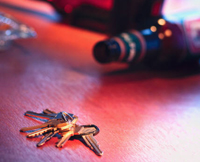 Dangers increase for drivers in the period between Christmas Eve and New Year’s Day. There is more traffic on the road, drivers are often growing accustomed again to operating in the snow and many people are drinking and driving. These factors often lead to an increase in motor vehicle accidents.
Dangers increase for drivers in the period between Christmas Eve and New Year’s Day. There is more traffic on the road, drivers are often growing accustomed again to operating in the snow and many people are drinking and driving. These factors often lead to an increase in motor vehicle accidents.
The Boston motor vehicle accident lawyers at Breakstone, White & Gluck, urge you to drive safely and offer these tips:
For Drivers and Passengers
- The driver and all passengers should wear seat belts.
- Have a Designated Driver.
- Carry the phone number for a cab company. Call them beforehand to ask any questions so you are not reluctant to call them later.
- Consider taking public transportation, such as a bus or subway if available.
- Stop drinking a few hours before you plan to leave.
- Stay where you are until you are sober enough to drive.
- Travel slow. More drivers and pedestrians may be on the roads for the holidays.
- If possible, familiarize yourself with your driving route during daylight hours and before the holiday.
- Parents should limit the driving of teenagers on the holidays to avoid car accidents.
For Party Hosts
- Offer both alcoholic and non-alcoholic beverages.
- Have a cab company’s phone number ready.
- Stop serving alcohol early.
- In Massachusetts, you have a legal responsibility to make sure your guests do not leave your home under the influence. If you are hosting a party and serving alcohol, learn about the Massachusetts social host liability law.
Preventing Food Poisoning After Ground Beef Recall
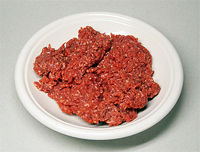 A Northeastern grocery store chain has recalled various packages of ground beef after 14 people have been infected with an antibiotic-resistant strain of Salmonella.
A Northeastern grocery store chain has recalled various packages of ground beef after 14 people have been infected with an antibiotic-resistant strain of Salmonella.
Hannaford, of Scarborough, Maine, issued the voluntary recall Thursday, Dec. 15, for an undetermined amount of fresh ground beef that may be contaminated with Salmonella Typhimurium. This strain of Salmonella is resistant to treatment by many antibiotics, including drug classes such as beta-lactams and aminoglycosides. Seven of the 14 people who suffered food poisoning were hospitalized.
The United States Department of Agriculture (USDA) has classified the recall Class 1 with a high health risk. This classification means there is a reasonable probability that use of a product will cause serious, adverse health consequences or death.
The grocer recalled 10 different types of ground beef, ranging from 73 percent to 90 percent. Hannaford said most of the affected individuals had consumed 85 percent. The affected packages have the sell-by date of Dec. 17, 2011 or earlier. They were sold at Hannaford stores in Massachusetts, Maine, New Hampshire, New York and Vermont. Hannaford is offering consumers a full refund.
The ground beef involved in the food poisoning outbreak was sold under the brand names of Hannaford, Taste of Inspirations and Nature’s Place.
The USDA is reminding consumers to check their freezers as well as refrigerators as it continues to investigate.
The USDA said Hannaford kept limited records regarding the source of the ground beef and it is unable to determine the responsible supplier. The government agency said it will pursue rulemaking to address this problem in the future.
Salmonella is one of the most common bacterial foodborne illnesses. It can be life-threatening in individuals with weak immune systems, such as the elderly. Common symptoms include diarrhea, abdominal cramps, fever, headache, chills, nausea and vomiting. The food poisoning symptoms can start within 12 to 72 hours of food consumption and last up to seven days.
Preventing Salmonella
The USDA advises consumers to take special care in handling ground beef to avoid Salmonella.
Wash Your Hands. Consumers are urged to wash their hands with warm, soapy water for at least 20 seconds before and after handling food.
Separate. Keep raw meat, fish and poultry away from other foods that will not be cooked. Use separate cutting boards for different meats and egg products.
Cook Properly. Cook meat to safe internal temperatures. The safe internal temperature for beef and pork is 160 degrees Fahrenheit and 165 degrees for poultry. Use a food thermometer to check.
Refrigerate Immediately. Refrigerate raw meat and poultry within two hours of purchase or one hour if kept in temperatures of 90 degrees or greater.
Click here to read the full USDA notice on the Hannaford Ground Beef Recall.
Read More
Carbon Monoxide Poisoning a Risk in Winter
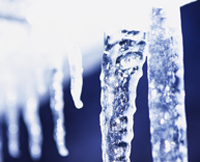 With the official start of winter just days away, it is a good time to get your home and automobile ready. While some types of home heating equipment require little preparation, it is best to review yours before the snowfall.
With the official start of winter just days away, it is a good time to get your home and automobile ready. While some types of home heating equipment require little preparation, it is best to review yours before the snowfall.
Winter home heating carries the risk for fires and carbon monoxide poisoning, which can result from a build-up of the invisible, poisoning gas. Each year, half of all home fires occur in the three months from December to February, when home heating equipment is most used. Some 1,500 Americans die each year from carbon monoxide poisoning, while more than 10,000 suffer carbon monoxide injuries, according to Children’s Hospital Boston.
Smoke and Carbon Monoxide Detectors
Make sure your smoke detectors and carbon monoxide alarms are working and properly placed. Massachusetts requires smoke alarms be installed on every habitable level of a residence as well as in basements. Carbon monoxide detectors are also required on every habitable level of the home. Additional units are recommended outside of bedrooms and sleeping areas.
Chimneys
Get your chimney professionally cleaned once a year. Report any cracks or water leaking. Fall is the best time for a cleaning. Creosote can build up in the chimney over time, lead to blockages and produce carbon monoxide. Creosote is created when firewood does not burn correctly, when wet or soft wood is placed in the fireplace and by closing the fireplace before the wood is fully burned.
Fireplaces
Open the fireplace damper before lighting and keep it open until the ashes are cool. Never close the damper before going to bed if the ashes are still warm. An open damper may prevent the build-up of poisoning gases. Light your fire with matches. Never use gasoline, charcoal lighter or another fuel because the vapors can explode. Make sure you have no flammable materials near open flames.
Furnace Vents
Your heating system will likely have a vent on your home’s exterior. The vent will have two pipes, one of which lets air in and one of which sends air back out. Make sure both of these pipes are kept clear of snow to avoid carbon monoxide from building up in your home.
Cars
Check your snow tires and decide whether you need new ones. Check your tires’ air pressure using a gauge, which you can purchase at an auto parts store. Put an emergency kit inside your car and make sure it includes a neon-glow vest, snacks, a flash light and other essential supplies. Click for a full list of emergency safety supplies.
If you have a garage, make sure you do not warm up your car inside it with a closed door. Pull your car out and heat it in the driveway to prevent carbon monoxide poisoning.
For more information about winter safety, visit these sites:
Home Safety Tips for a Safe and Healthy Winter, Home Safety Council.
Medical Device Recall for CooperVision Contact Lenses
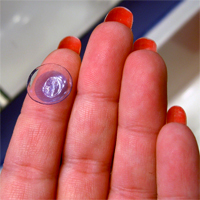 Consumers are advised to stop using a second type of CooperVision’s Avaira contact lenses due to a defect that may result in blurry vision and other eye injuries.
Consumers are advised to stop using a second type of CooperVision’s Avaira contact lenses due to a defect that may result in blurry vision and other eye injuries.
On Nov. 16, an unknown quantity of CooperVision Avaira (enfilcon A) Sphere contact lenses were recalled due to the unintended presence of a silicone oil residue.
CooperVision, a Fairport, NY-company, recalled the lenses in cooperation with the Food and Drug Administration (FDA), which states that the silicone oil residue can result in a wide range of symptoms, including eye discomfort, hazy and blurry vision and eye injuries requiring medical treatment. The FDA regulates contact lenses as a medical device.
The recalled lenses were manufactured from Feb. 1, 2011 to Aug. 24, 2011 and distributed from March 2, 2011 to Nov. 15, 2011.
The contact lenses were used to correct myopia and hyperopia and non-aphakic individuals with non-diseased eyes. The lenses may be worn by individuals who have astigmatism of 2.00 diopters or less that do not interfere with visual acuity.
Lens wearers have been instructed to stop using the lenses immediately and contact their eye care professional. They can visit the CooperVision recall website and enter the defective medical device package numbers to determine if their lenses have been recalled.
The medical device recall expanded another in August 2011 for limited lots of Avaira Toric contact lenses. CooperVision said the product defect on that line has been corrected through its quality system process.
Contact lens injuries are prevalent, due to product defect or improper use. They are most common among children and adolescents. In a study published in the July 2010 Pediatrics, FDA researchers reported 23 percent of total medical device injuries in 2004 and 2005 in the U.S. involved children and contact lenses. Children ages 11 and over were the most affected.
Common personal injuries include corneal contusions and abrasions, hemorrhage and conjunctivitis.
Click to read the FDA notice about the CooperVision recall.
Read More
Motor Vehicle Accidents at Massachusetts Police Details
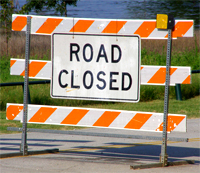 Massachusetts police officers assigned to protect public safety at roadside construction details are increasingly becoming the victims of car accidents themselves.
Massachusetts police officers assigned to protect public safety at roadside construction details are increasingly becoming the victims of car accidents themselves.
On Dec. 5, a Peabody police officer was struck by a 1991 Chevrolet pick-up truck while working on a Rte. 1 construction detail. He was thrown over the truck’s hood and transported to Massachusetts General Hospital with serious personal injuries. An initial police investigation found the driver was speeding, but it remains ongoing.
In recent years, negligent drivers have struck police officers on several construction details in Massachusetts and caused life-threatening personal injuries. In June 2010, state police Sgt. Douglas Weddleton was killed while working on a construction detail on Interstate 95 in Mansfield. The driver was charged with operating under the influence as well as other driving infractions.
Police officers are not the only ones vulnerable in construction site accidents. Construction workers as well as pedestrians, homeowners and others nearby are also at risk for injury, especially during night construction.
Drivers have a responsibility to operate with care in construction areas. Here are a few ways to make your travel safer:
Avoid Construction Zones If Possible. When you find a construction project on your daily commute, see if you can find an alternate route until work is complete. For projects in your local community, pay attention to your town’s government website and contact the police department’s business line if you have questions.
Identify Who Is In Charge of Traffic. Detail police officers typically direct traffic on many sites, but other work sites utilize civilian flaggers. The civilian flaggers should be dressed in fluorescent clothing and carrying traffic direction signs.
Give Other Drivers Space. Do not travel too closely behind other vehicles. It can be difficult to anticipate when another vehicle may stop short.
Slow Down. We all want to reach our destinations on time, but once you are stuck in construction traffic, it is best to take a deep breath and be as patient as possible to avoid a car accident.
Keep Your Eye on the Traffic. When there is a lot of activity going on at a construction site, there is a natural tendency to look at the crew and different machinery. But it is important to keep your eyes on the road.
Do Not Stop to Talk to the Detail Officer. Even if traffic volume is low, do not stop and ask the detail officer for help or directions. You are putting the officer at risk and confusing other drivers.
Avoid Construction Work Zones At Night. A large number of car accidents occur during night construction work because drivers are speeding, fatigued, operating under the influence or poor lighting.
Pedestrians and Cyclists. Like cars, it is also important for pedestrians and cyclists to follow the detail officer’s instructions for when to pass.
Read More
Decorating Safely for the Holidays
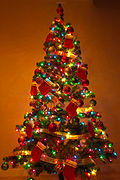 While it is the most wonderful time of the year, the holiday season is also a prime time for home fires.
While it is the most wonderful time of the year, the holiday season is also a prime time for home fires.
In Massachusetts, from 2002 to 2007, Christmas Day saw the second most number of residential fires of any day while Christmas Eve ranked ninth, according to the Office of the State Fire Marshal. The majority of these fires can be prevented with planning and awareness.The Boston injury lawyers at Breakstone, White & Gluck offer these tips to help you and your family enjoy the season safely:
Christmas Tree Watering
- Do not pick up your Christmas tree immediately after Thanksgiving.
- Make sure you have an adequate size tree water stand.
- Learn how much watering your tree needs. In general, you should use one quart of water per day for each stem diameter. Ask your local fire department for more instructions.
- Remove your tree in a timely manner to avoid letting it dry out. Many communities offer special Christmas tree pickups after the holiday.
- Another option is to cut up your tree branches and place them over a garden.
- Do not leave your tree outside unattended overnight for teenagers and vandals to find.
Christmas Tree Holiday Lights
- Keep your tree at least three feet away from flame or heat sources, such as fireplaces and radiators. These pose a fire risk and will dry out your tree faster.
- Never put candles on or near your tree.
- Check your Christmas tree lights for broken bulbs. If one is damaged, remove the whole string to avoid a fire accident.
- Make sure your Christmas tree lights are designed for indoor use.
- Unplug Christmas tree lights when you leave the house or go to bed.
- Check if your Christmas tree lights have been tested for safety by a nationally recognized laboratory. If they have, they will be marked ETL, UL or CSA.
- Do not put too many lights on your tree. Check the box for the appropriate number of strings.
- Place your tree near a power outlet to reduce use of extension cords. Make sure extension cords have been marked UL to show they have been tested.
- If you have an artificial tree, check to see if it has the label “Fire Resistant.”
Holiday Candles
- Use sturdy candle holders with flame-protective and non-combustible shades or globes.
- Never leave burning candles unattended.
- Place burning candles in the center of tables.
- Place burning candles at least four feet away from curtains, bedding and other flammables.
- Keep candles and matches away from children.
- When lighting candles, secure hair and clothing away from candles to prevent injuries.
- If you are lighting multiple candles, make sure you are aware of how much heat they generate.
Bicycle Accidents Rare in Boston Hubway Program, Officials Report
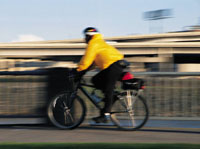 Boston’s popular Hubway bike sharing program will expand into Cambridge and Somerville next spring, providing more opportunities for healthy, environmentally-friendly and fun travel.
Boston’s popular Hubway bike sharing program will expand into Cambridge and Somerville next spring, providing more opportunities for healthy, environmentally-friendly and fun travel.
Boston’s program, which began in July 2011, is scheduled to close its 60 bike rental stations and 600 bikes this week for the winter. Bikes are expected to be available again next March, weather permitting. At the same time, Cambridge plans to open 20 stations in areas such as Harvard, Central and Inman squares. Somerville plans to open 8 stations including in Porter, Union and Davis squares.
Brookline is also working on adding two Hubway stations at Coolidge Corner and Brookline Village.
Boston’s Hubway program had 3,650 annual members in its first season. The system is partly funded by a $3 million grant from the Federal Transit Administration. It is intended for short trips as an extension of public transit. Annual members who pay $85 per year and those with one-day $5 and three-day $12 memberships can take unlimited rides, but they must return bikes within 30 minutes to avoid incurring additional fees.
Among annual members, the average ride lasted 17 minutes.
As officials close up the Boston program for the winter, they report concerns over an increase in bicycle accidents never materialized. The program saw no serious bike crashes requiring ambulance response and only two bike accidents overall.
But one issue is less than half of Hubway cyclists appeared to wear bike helmets, the program reported. Nearly 75 percent of riders on other bikes wore helmets. The city of Boston has tried to boost bike helmet use by working with 30 bike shops to offer subsidized bike helmets for less than $10.
The Boston bike accident lawyers at Breakstone, White & Gluck urge cyclists to learn Massachusetts bicycle laws. Click here for our guide.
We also urge cyclists to consider purchasing bicycle accident injury protection through their automobile insurance policies. Check your uninsured and underinsured motorist coverage, which provides protection if there is a bicycle accident. This insurance is affordable and can ease the physical and financial recovery after a bicycle accident. Click to read our guide What Every Bicyclist Needs to Know About Car Insurance.
Click here to read an article in The Boston Globe about the Hubway bicycle sharing program.
Click here to learn more about Boston’s Hubway sharing program.
Read More
Cooking a Safe Thanksgiving Dinner
 At Thanksgiving, the focus is on enjoying good food and family. But attention must also be paid to fire safety because Thanksgiving sees more residential fire deaths, injuries and property damage than any other day of the year.
At Thanksgiving, the focus is on enjoying good food and family. But attention must also be paid to fire safety because Thanksgiving sees more residential fire deaths, injuries and property damage than any other day of the year.
These fires are preventable with solid planning and good communication among those who are preparing the meal and others in the home. The Massachusetts personal injury lawyers at Breakstone, White & Gluck of Boston offer these tips to keep your holiday safe:
- Never leave food cooking unattended. If you have to leave the kitchen, turn the stove off or ask someone to watch the food.
- Make sure you have properly working smoke alarms near your kitchen.
- Keep oven mitts, wooden utensils, towels and other materials away from the stovetop.
- Use a timer to remind you when to stop cooking.
- Avoid using candles, especially near young children.
- Make sure cords to electrical tools and appliances, such as electric knives, are not dangling within reach of a child.
- Make sure children stay away from liquids and soft foods such as gravy and vegetables until they cool down. If these foods are too hot, they can cause skin burns.
What To Do If You Have A Cooking Fire
Keep a small fire extinguisher handy in your kitchen, either under the sink or close by in a closet. Inspect it periodically and make sure it is properly charged. If you have a cooking fire, it is best to call 911, wait outdoors for the fire department.
If it’s an oven fire, turn off the heat and keep the door closed. For small grease fires, smother the fire by sliding the lid over the pan and turning off the stove top. Leave the pan covered until it is cool. Never use water to extinguish a grease fire. You could be badly burned.
If you try to put out the fire, be sure everyone else is out of the home and you have a clear exit path.
Read More
Defective Products: The 10 Most Dangerous Toys of 2011
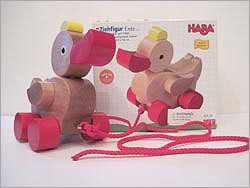 As the holidays approach, the lawyers at Breakstone, White & Gluck, PC urge you to shop carefully to avoid dangerous toys.
As the holidays approach, the lawyers at Breakstone, White & Gluck, PC urge you to shop carefully to avoid dangerous toys.
Each year, companies recall thousands of toys that put children at risk for injuries such as strangulation, lacerations, falls and death. According to the Consumer Product Safety Commission, the 34 toy recalls in fiscal 2011 were a marked decrease from 172 in 2008, but toy-related deaths rose slightly last year, with 17 children suffering wrongful deaths from defective toys.
In 2010, about 181,500 children were treated in emergency rooms for toy-related injuries. Non-motorized scooters continue to cause the most injuries, while toys with small parts and unsafe cords are also involved in many recalls.
Each year, a non-profit Boston organization, World Against Toys Causing Harm Inc., (WATCH) releases a list warning parents about the hazards of certain toys. The toys present hazards for burn injuries, strangulation injuries, and other bodily injury. This year’s “WATCH’s Most Dangerous Toys of 2011,” includes:
1) The Incredible Shrinky Dinks Maker
Potential hazard: Possible electric shock and burn injuries.
2) Sword Fighting Jack Sparrow
Potential Hazard: Possible eye and other bodily injuries.
3) ‘Gigan’ Godzilla Figure
Potential hazard: Possible puncture wounds.
4) Twist ‘n Sort
Potential hazard: Small parts cause a choking hazard.
5) Power Rangers Samurai Mega Blade
Potential hazard: Blade can cause injuries.
6) Fold and Go Trampoline
Potential hazard: Can cause injuries to people using it, including to the head and neck.
7) Pulling Animal Duck
Potential hazard: Potential for strangulation injuries.
8) School Bus
Potential hazard: Choking hazard.
9) Z-Curve Bow
Potential hazard: Danger to eyes.
10) Stepper ‘Low Rise” Stilts
Potential hazard: Head and other injuries from impact.

